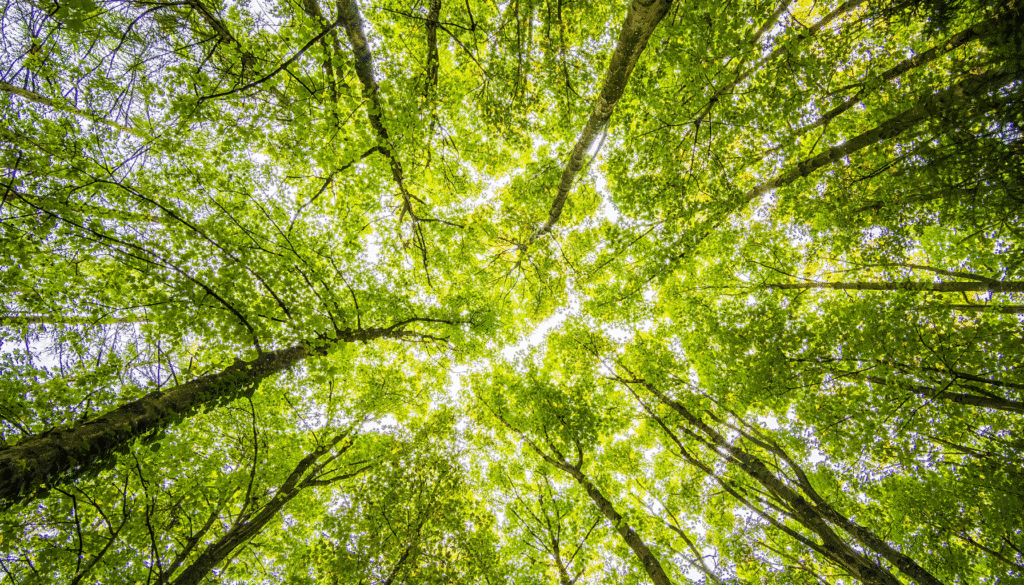When you walk through a forest, you might see a peaceful landscape filled with silent trees. But beneath the surface, there’s a secret world—a vast underground communication network connecting trees, sharing resources, and even sending warning signals.
Scientists have begun to uncover what they now call the “Wood Wide Web”—a complex, living system of tree-to-tree communication made possible by fungi, roots, and chemical signals.
This isn’t fantasy. It’s real science—and it’s changing how we understand forests, plants, and even intelligence itself.
How Do Trees “Talk”?
Trees can’t speak, but they communicate in other ways—and one of the most incredible is through mycorrhizal networks.
What are Mycorrhizal Networks?
These are underground webs of fungal filaments (called hyphae) that connect to the roots of trees and plants. The fungi and trees form a symbiotic relationship:
- Trees provide sugars (from photosynthesis) to the fungi.
- Fungi help trees absorb water and nutrients more efficiently.
But that’s just the beginning.
These fungi also create a vast, interconnected network—linking trees of the same and different species, like a biological internet.
What Do Trees Share Through These Networks?
Scientists have discovered that trees can send and receive a surprising range of resources and information through these underground systems.
Shared resources include:
- Carbon (especially from large, older trees to younger ones)
- Nitrogen and phosphorus
- Water during drought conditions
- Defensive chemicals to resist pests
Some trees act as “hubs” or “mother trees,” distributing nutrients across large areas—supporting weaker or younger plants nearby.
Warning Systems and Forest Intelligence
One of the most fascinating discoveries? Trees use these networks to warn each other about dangers.
Examples:
- When a tree is attacked by insects, it can release chemical signals underground, alerting nearby trees to increase their defenses.
- Some trees can detect the stress of neighboring plants and adjust their own behavior.
It’s a form of plant communication and communal defense, hinting at a kind of intelligence we’re only beginning to understand.
The Scientist Who Revealed the Forest’s Hidden Mind
Much of this research comes from Dr. Suzanne Simard, a forest ecologist from Canada who spent decades studying tree interactions.
Her experiments showed that:
- Trees connected by mycorrhizal fungi grow faster, heal better, and survive longer.
- Cutting down “mother trees” harms the forest’s health and recovery.
- Forests are cooperative communities, not just collections of individual trees.
She helped shift the paradigm from “survival of the fittest” to “cooperation is survival” in the plant world.
What This Means for Forest Conservation
Understanding forest communication changes how we should treat natural ecosystems.
Key takeaways:
- Clear-cutting forests disrupts the underground network and weakens the ecosystem.
- Planting diverse species together supports healthier, more resilient forests.
- Preserving older trees protects the knowledge and support systems of the forest.
This knowledge is being used to rethink reforestation, urban forestry, and climate resilience strategies.
Is This Intelligence?
Some scientists believe this behavior reflects a form of distributed intelligence:
- Trees sense, respond, and adapt.
- They form networks, share resources, and make decisions.
They don’t have brains—but they have systems that store, transfer, and process information.
It forces us to ask: Does intelligence require a brain? Or can it emerge in other ways?
The Bigger Picture: The Forest as a Living Organism
When you look at a forest through the lens of this research, it no longer seems like a bunch of individual trees—it becomes a superorganism, alive, aware, and interconnected.
Like neurons in a brain, the trees are nodes in a complex, self-regulating ecosystem. Destroy one part, and the rest feels it.
The more we learn, the more we realize that plants are far more alive and aware than we ever imagined.
Final Thoughts: Listening to the Forest
For centuries, humans thought of trees as silent, passive lifeforms. But science now reveals that forests are active, dynamic communities—filled with connection, cooperation, and communication.
And maybe, when we walk through the woods, it’s not just the birds and wind that are speaking. Maybe the trees are talking too.



